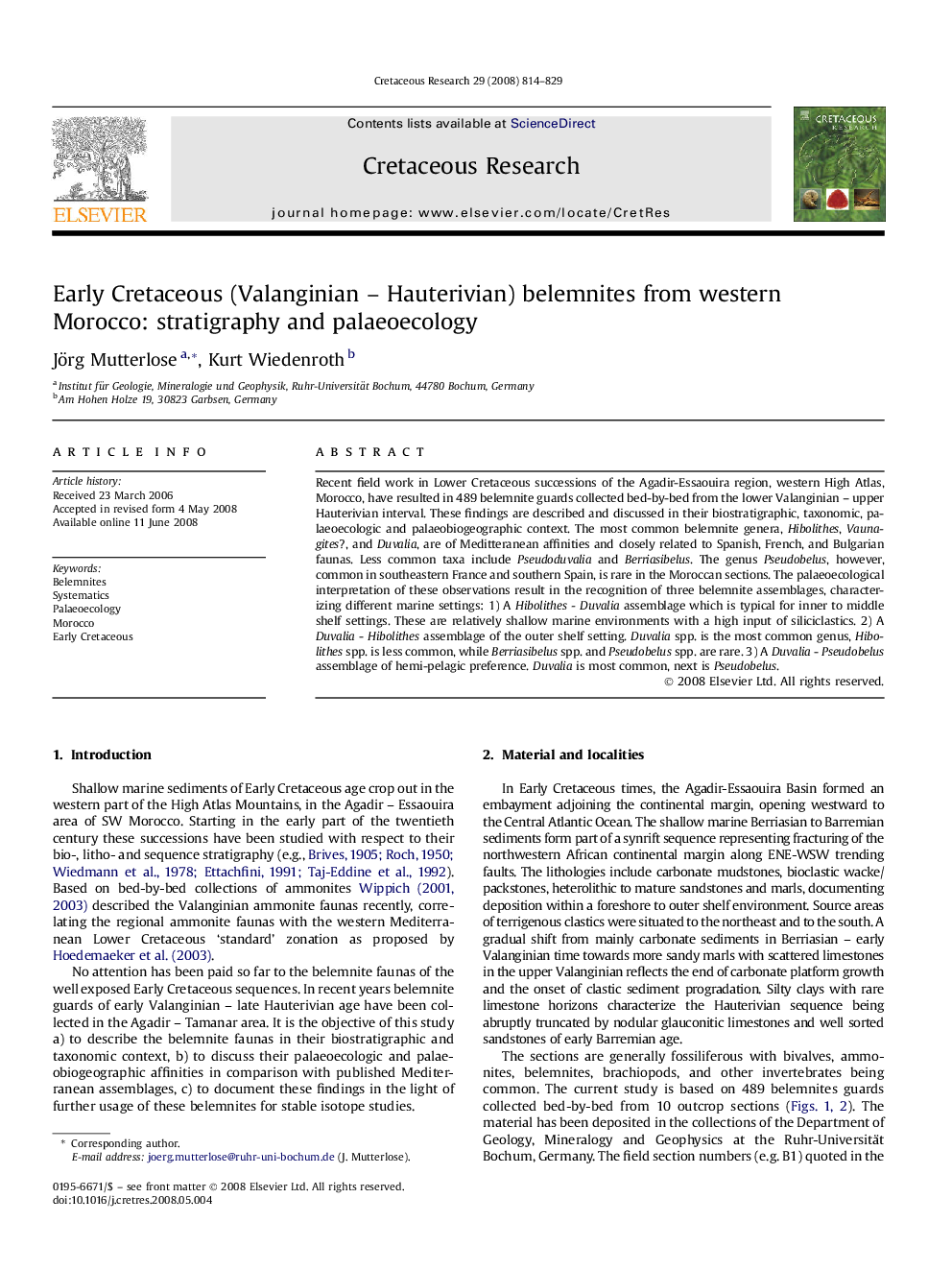| Article ID | Journal | Published Year | Pages | File Type |
|---|---|---|---|---|
| 4747697 | Cretaceous Research | 2008 | 16 Pages |
Abstract
Recent field work in Lower Cretaceous successions of the Agadir-Essaouira region, western High Atlas, Morocco, have resulted in 489 belemnite guards collected bed-by-bed from the lower Valanginian - upper Hauterivian interval. These findings are described and discussed in their biostratigraphic, taxonomic, palaeoecologic and palaeobiogeographic context. The most common belemnite genera, Hibolithes, Vaunagites?, and Duvalia, are of Meditteranean affinities and closely related to Spanish, French, and Bulgarian faunas. Less common taxa include Pseudoduvalia and Berriasibelus. The genus Pseudobelus, however, common in southeastern France and southern Spain, is rare in the Moroccan sections. The palaeoecological interpretation of these observations result in the recognition of three belemnite assemblages, characterizing different marine settings: 1) A Hibolithes - Duvalia assemblage which is typical for inner to middle shelf settings. These are relatively shallow marine environments with a high input of siliciclastics. 2) A Duvalia - Hibolithes assemblage of the outer shelf setting. Duvalia spp. is the most common genus, Hibolithes spp. is less common, while Berriasibelus spp. and Pseudobelus spp. are rare. 3) A Duvalia - Pseudobelus assemblage of hemi-pelagic preference. Duvalia is most common, next is Pseudobelus.
Related Topics
Physical Sciences and Engineering
Earth and Planetary Sciences
Palaeontology
Authors
Jörg Mutterlose, Kurt Wiedenroth,
